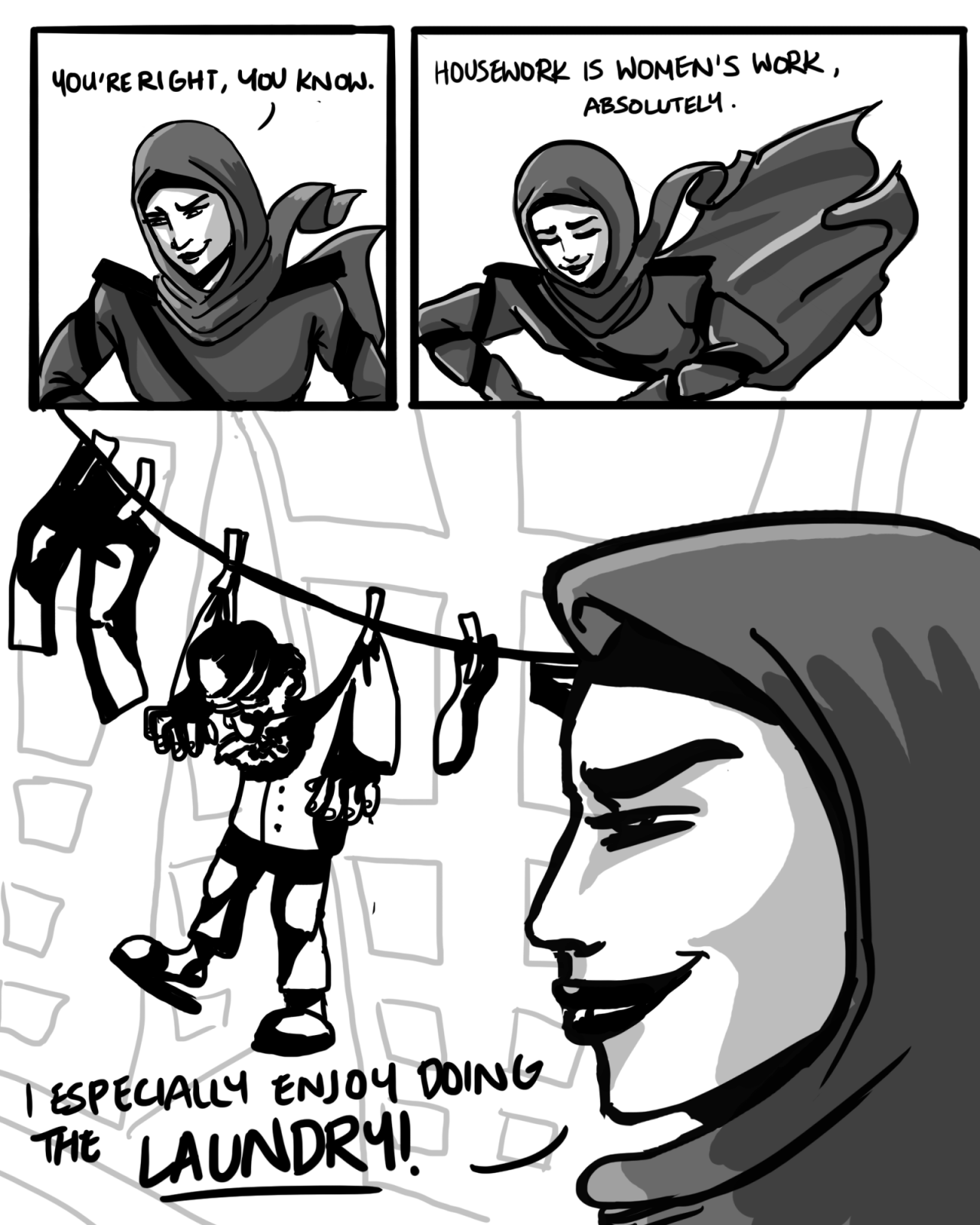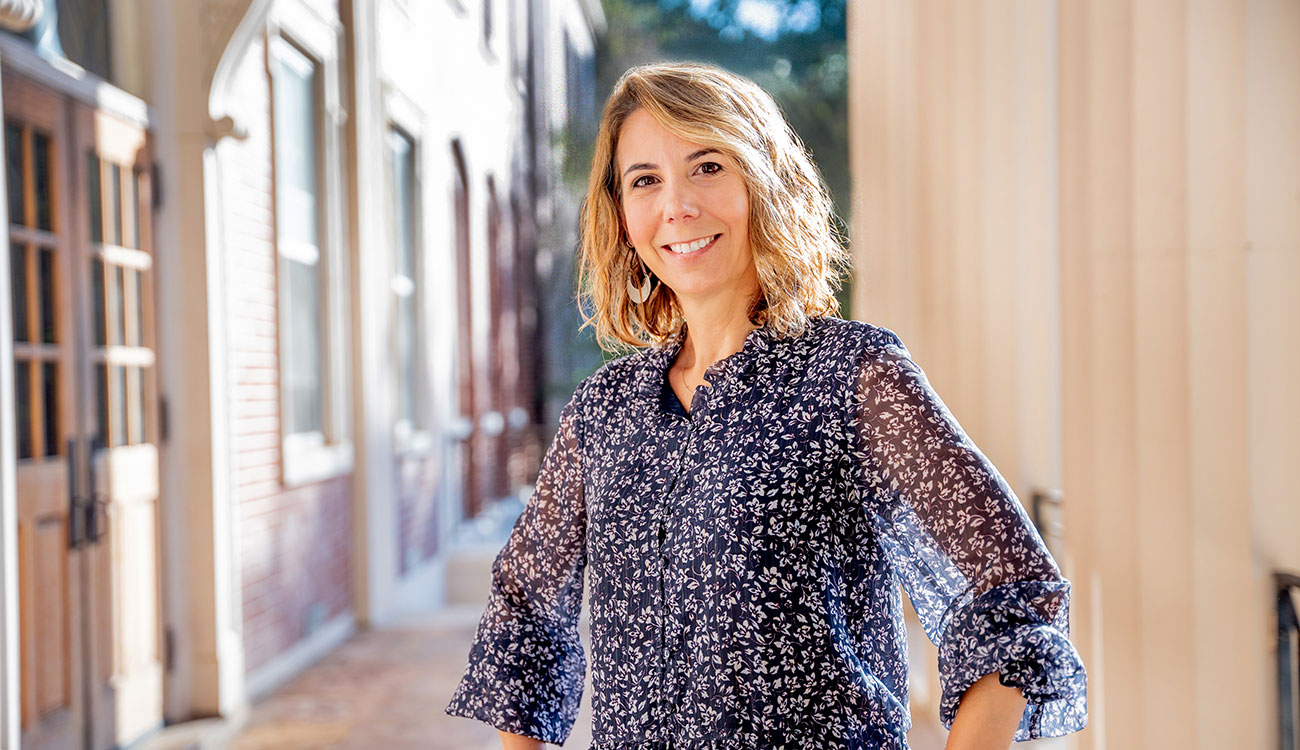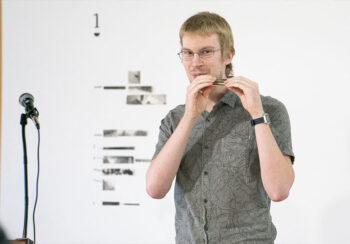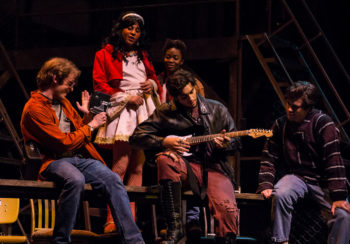Art speaks truth in a way that history cannot. Integrating images with text, the graphic novel can illustrate an extremely personal point-of-view. Not only can it convey the internal dialogue of the work’s characters, but it can also deliver a visceral gut-punch with an image or the absence of one.
Esra Mirze Santesso, associate professor of English in the Franklin College of Arts & Sciences, wasn’t always a critic and educator of graphic novels. But after a colleague introduced her to Persepolis, a coming-of-age story set in the Iranian Revolution, she realized just how poignant, rich—and popular—the medium is in majority Muslim countries.
This was surprising, given that some adherents to the faith view visual representations of humans as blasphemous. Yet a small but growing number of authors and artists are using the medium to tell intimate and compelling stories of life in the Muslim world. Santesso’s book, Muslim Comics and Warscape, is tentatively due out next year.
“In the last decade or two, there’s been an explosion of comics and graphic narratives from Egypt, Syria, Iran, Turkey and Palestine, with authors merging text with image to engage with human rights violations and the kinds of trauma that cannot be represented adequately using just language,” said Santesso. “They’re writing history from the margins.”
Authored mainly by expatriates living in the West, the graphic novels tackle dangerous themes that wouldn’t be possible if they resided in their home countries. In stories like Zahra’s Paradise, the creators, Amir and Khalil, narrate a tale about a teen protestor in Iran lost in a miasma of extralegal efforts to silence people like him who are critical of the regime.
The works are directed at two different audiences, according to Santesso. One is a global audience who may not be intimate with the horrors and injustices going on in other parts of the world, and the other is like-minded people in the authors’ home countries.
“They feel it’s their responsibility to educate the people in their own communities about their own history,” she said.
It’s not surprising that people would need access to stories going beyond the official explanations conveyed by the news media and governments, Santesso said, because she’s seen how students in her own classes are often wedded to “official” narratives without realizing it.
“My students were familiar with Guantanamo, but they had no idea what was really going on in there,” she said. After reading Guantanamo Kid along with other comics coming from the Middle East, “it really gave them a new perspective on something they thought they knew. They began to talk about how what they read made them think twice.”
The graphical nature of the medium, Santesso explained, allows the artist to viscerally articulate the thoughts and emotions that surface in the stories.
“The images say so much more than just words alone,” she said.

One gripping example comes in Persepolis, when jets are dropping bombs over a neighborhood, and the main character, Marji, watches the obliteration of her friend’s building. As she realizes her friend is dead, the dialogue reads: I screamed.
“Then the next panel is completely black, illustrating a trauma that cannot be conveyed in language,” said Santesso. “The comics medium really complicates that message by pushing the reader to actively participate in the meaning-making progress.”
It also allows the works to show life far beyond what’s portrayed in Western media, beyond the radicals and extremists into the lives of everyday people, to see what it’s like to live there from the perspective of the people who do.
In addition, graphic novels can speak to a younger audience than historical books or even daily journalism does, Santesso said. A 12-year-old is unlikely to pick up Arab Spring Then and Now, but they will read Baddawi, a story about a young Palestinian refugee trying to find his place in the world.
The artists of the medium are engaging in an organic form of resistance, she said, working to convert people to their cause with their pen rather than guns and bombs. However, they’re working on converting people who are already sympathetic to their cause. They’re not under the impression that the rulers are listening, she explained.
“They’re counting on the fact that the regime is not going to care about their words. It’s why they write in English.”
Santesso said she’s thinking of her book—which will cover contemporary Muslim comics written in English— as part one of a trilogy. The second will be on comics and Islamic feminism, and the third will cover Muslim comics and speculative fiction. In February, Santesso will host a symposium, “Muslim Comics and Women Artists,” featuring graphic novelists Ozge Samanci and Leila Abdelrazaq, along with comics expert Aliyah Khan. This event is sponsored by the Office of Institutional Diversity, the Arts and Humanities Research Council, and will be a part of the Global Georgia series organized by the Willson Center for Humanities and Arts.
“It’s important to not only expose students to these history-making works, but to give them the opportunity to meet and ask questions of the brave and inspiring authors who make them,” she said.





